

This workshop is looking at what colour is, how we see colour and the difficulties of determining the colour of objects on other planet surfaces.
All of this links in to Aberystwyth University's role in the current EXOMars space expedition which will hopefully launch in 2022.
Click on the headings below to reveal more.
We all know about how objects have different colours. Why? What makes something a certain colour?
When we look at objects in sunlight, we are looking at them using white light from the sun.
What is so special about white light is that it is made up of lots of different colours. This can be seen when water droplets in the air split the light to form natural rainbows. We can also replicate the effect using a prism, as shown below.

When the white light hits an object, some of the colours are absorbed and some are reflected. We see the reflected colour.
For example: A red ball reflects the red colour from the white light and absorbs all the others.
But what about black?
You have probably heard that black is not really a colour, this is because it absorbs all the white light, meaning no colours are reflected.
This means that black is the absence of light
Have you ever noticed how something looks a different colour outside than it does under indoor lights?
Perhaps you've also noticed a change in colour in different room lights.
Why is this?
Indoor lights differ from sunlight. Some are more blue, some more yellow. This means that the range of colours an object can absorb and reflect are slightly different.
Let us look at how obvious light colour changes effect how we see things.
Why does the post and ball look to be the same colour in blue or green light?
Try and find different coloured objects that are see-through (transparent). Look through them and explore how different coloured objects appear.
We have now looked at how colour is produced through the reflection and absorption of different colours of light.
Now, let us look at how we 'see' colours.
Would you be surprised if we told you that the human eye has the ability to detect only three colours? It's true.
Mixing light colours is very different to mixing paint colours.
In art, the primary colours (from which all other colours are mixed) are; red, blue and yellow.
Our eyes see in three primary light colours; red, green and blue, and we process their mixing to create all the colours we can see.
The below diagram gives a basic example of how the three colours we see overlap to form others
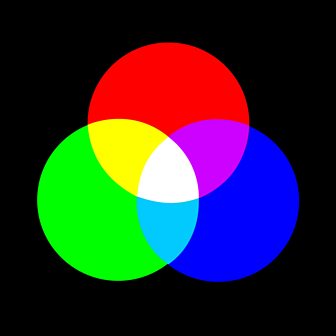
Wait a minute, are we trying to tell you that we see yellow through a mixture of red and green?
Let us try an experiment to prove this.
Please note: If you are colour-blind or are using a colour filtered screen, this demonstration will not work as intended.
Below is an image showing the primary and secondary colours of light.
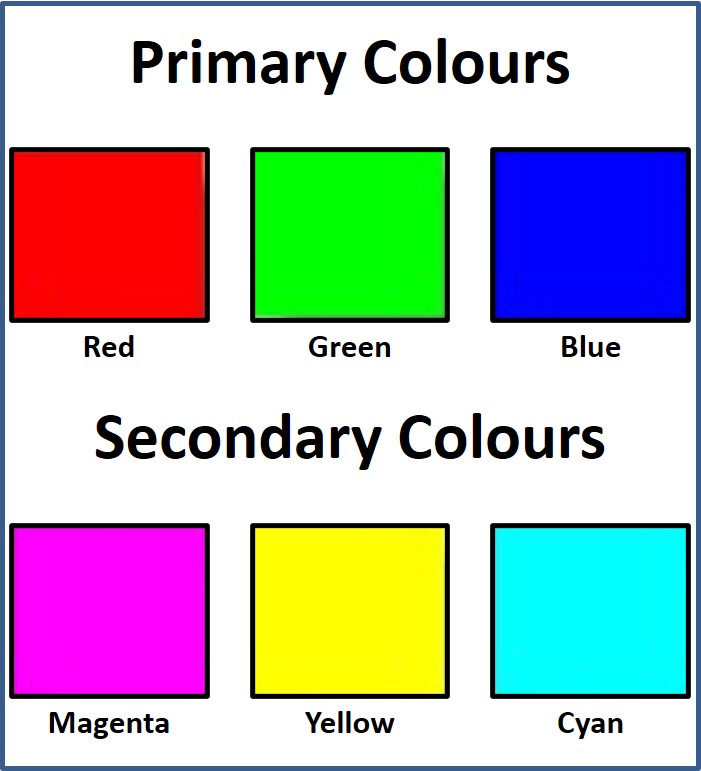
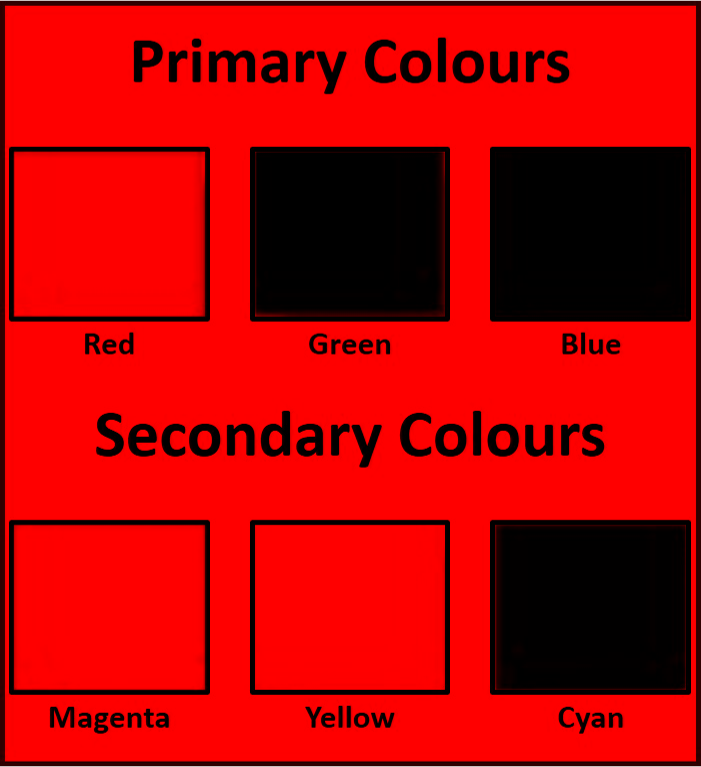
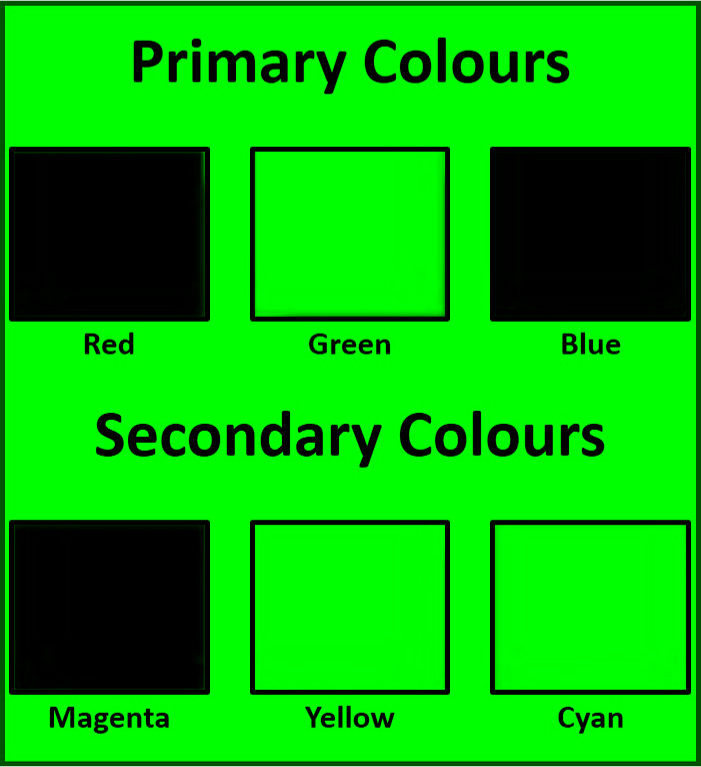
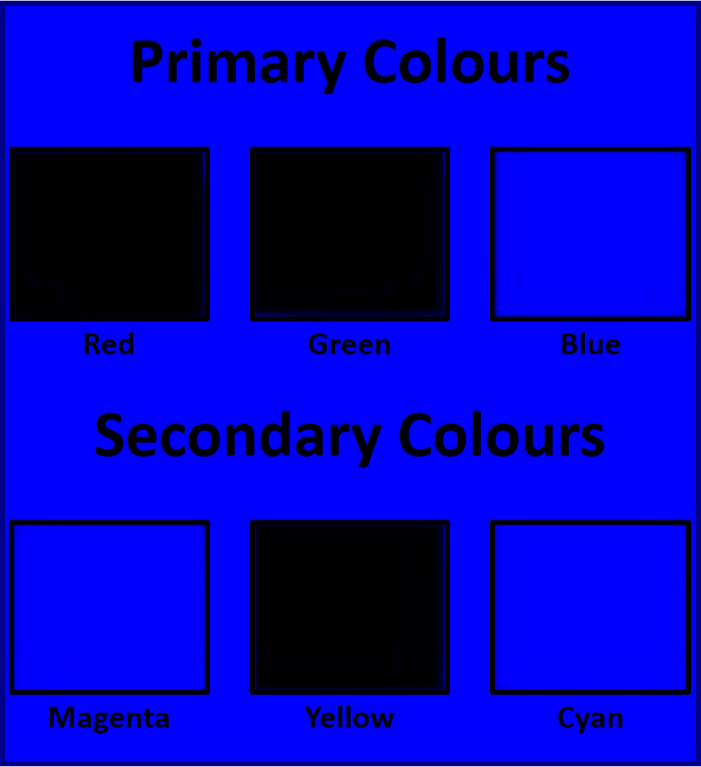
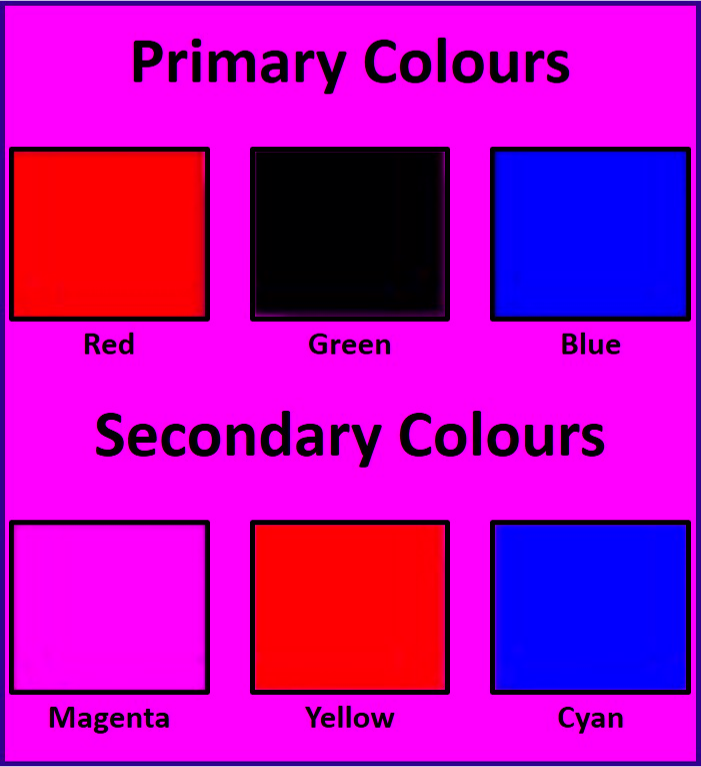
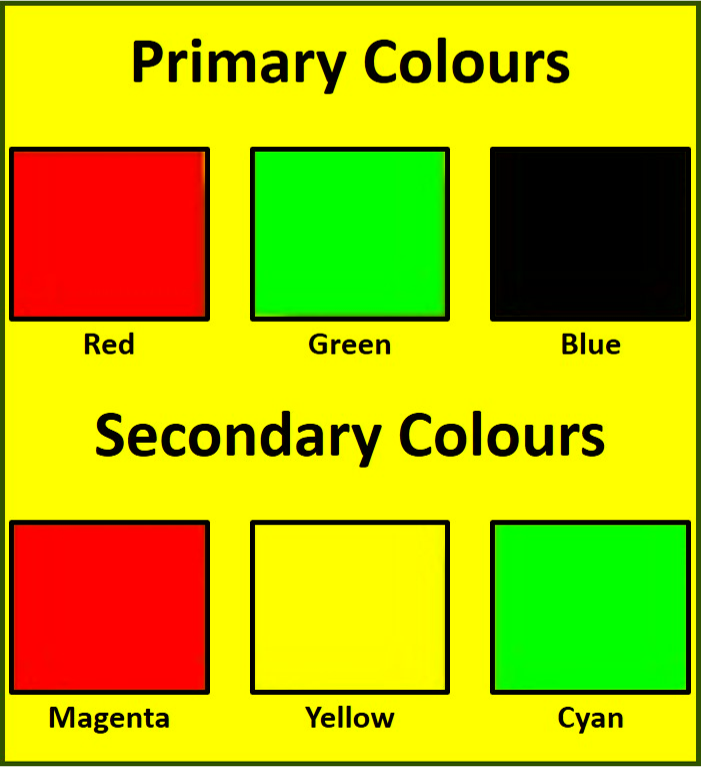
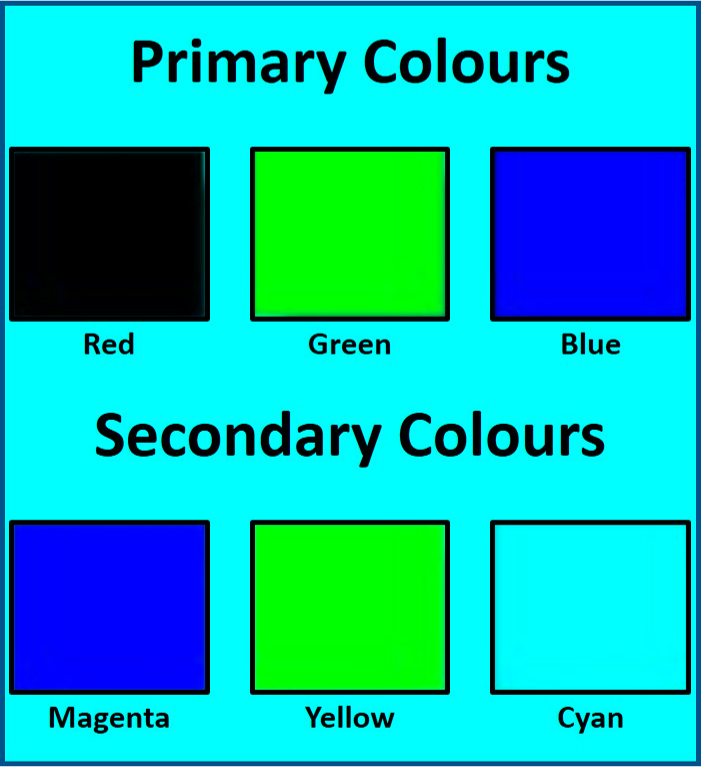
We have put these on a white background. We know that white will reflect any and all colours, so it will show you which colour light we are 'shining' onto the image
To make this into an experiment, draw a table of results that will allow you to show what colour each square appears under each colour of light.
Now would be a good time to try and predict what you think will happen.
For the experiment use the below buttons to change the viewing light.
Hopefully this exercise has helped you understand how we see light.
How could you use these results to prove that we see yellow through the mixture of red and green light?
To produce the different light effects for the above images we used the free software: LibreOffice Draw
We took the original images and altered the lighting using the rgb filters.
For example, to make it appear as under red light we reduced green and blue to -100% and increased red to 100%, before setting the brightness to -75%.
Using this, or another image altering software with the same ability, play with some of your own photos or images.
How alien can you make a landscape look just by altering the lighting?
Feel free to share your results with others by sending them to nar25@aber.ac.uk.
Our world would look very different if the light we got from the sun was any colour other than white.
The problem is, not all planets get white light at their surface. For planets in our own solar system, their atmospheres are very different to ours and these can change the colour of the light.
This means that when we send vehicles to other planets to take camera images and videos, the colours we see may not be correct.
We don't know what colour the light is on these planets accurately enough to just cancel them out completely on images.
NASA's surface images of Mars (from their rovers) are altered using expert predictions for colouring.
Physicists at Aberystwyth University are helping to make a camera for a future rover (the Rosalind Franklin EXOMars Rover) to take pictures of the true colour of the Martian surface.
This will help prove/disprove colour predictions used for previous surface exploration.
Below is an image of the Barnes Rover (a full-size model of the Rosalind Franklin) used for research at Aberystwyth University
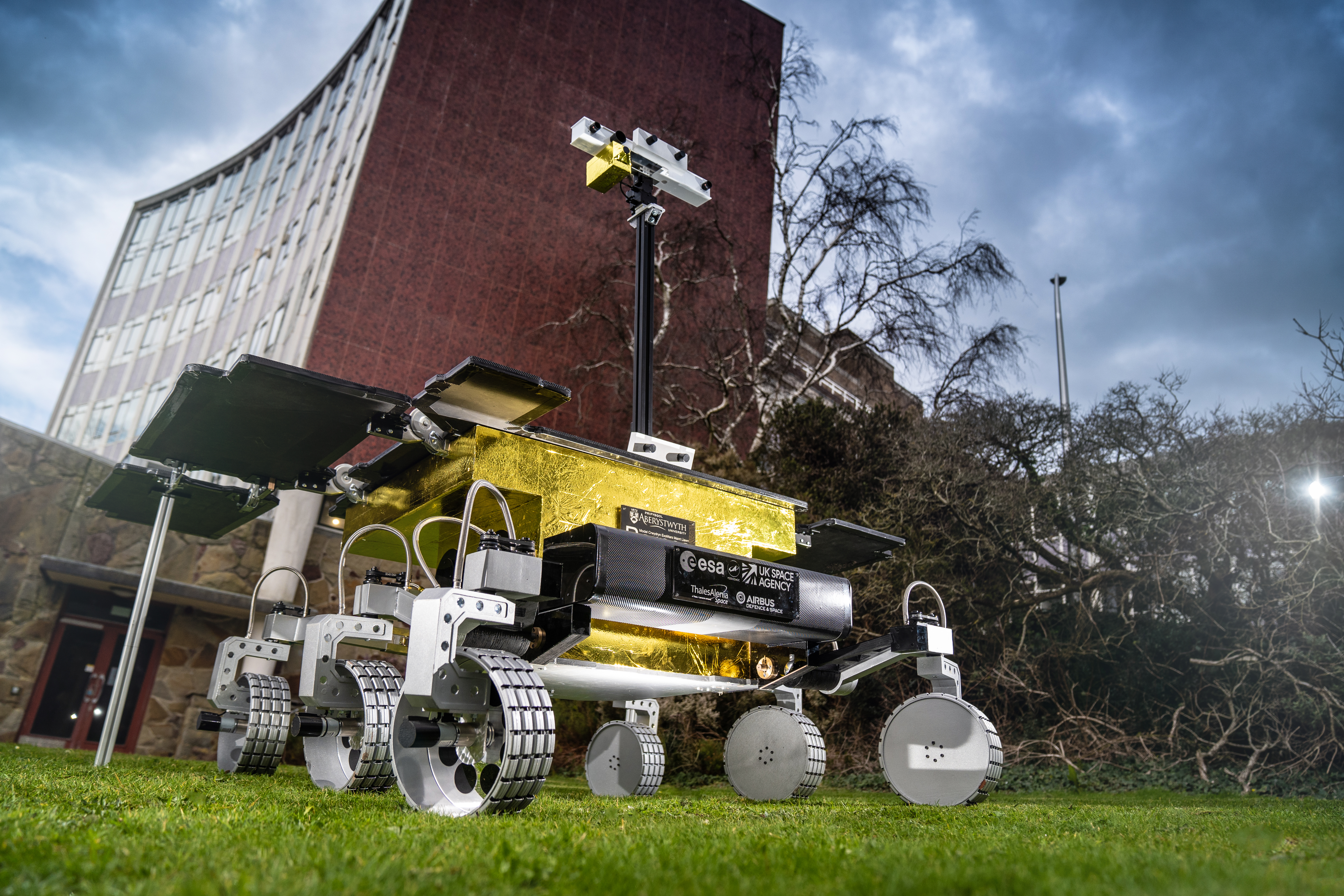
Our researchers have created a little colour-chart (called a calibration target) to fit onto the rover. We know exactly what these colours are. So when the rover reaches Mars, it can then use these known colours, to filter out the differences in appearance caused by the alien lighting.
This is what the colour calibration target looks like:
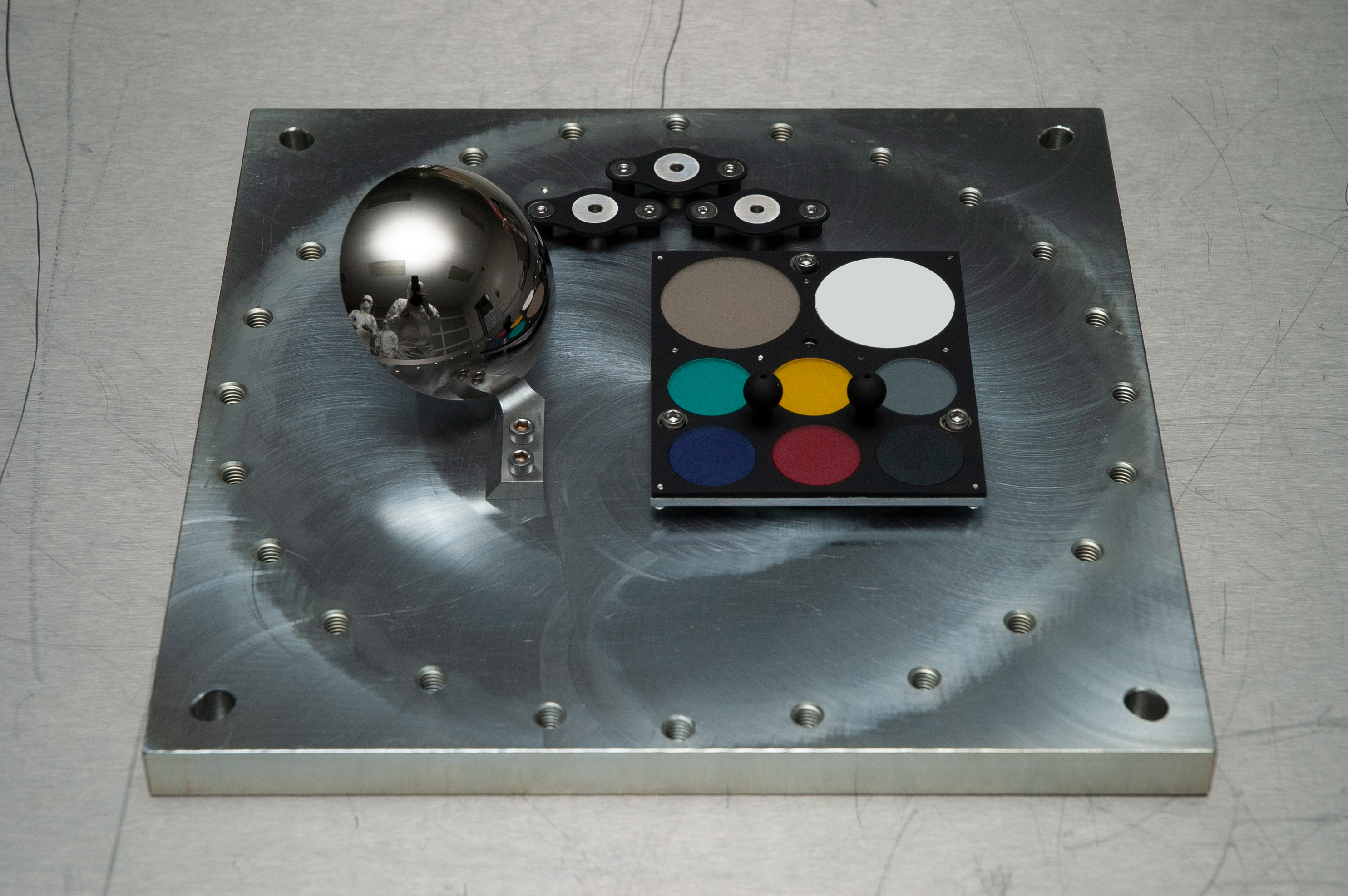
Image Credit: M. de la Nougerede, UCL/MSSL 2019.